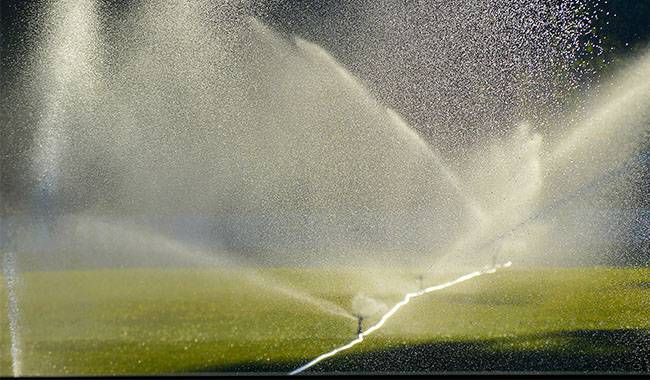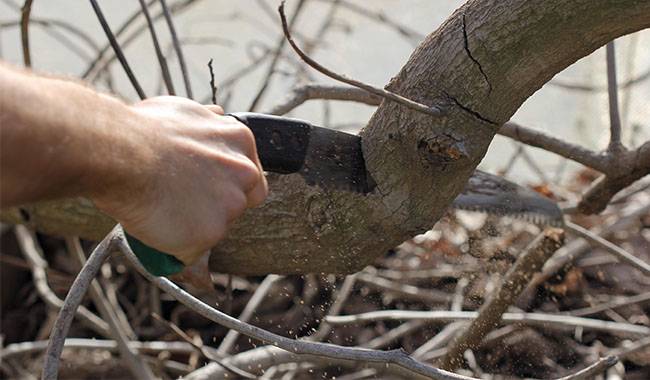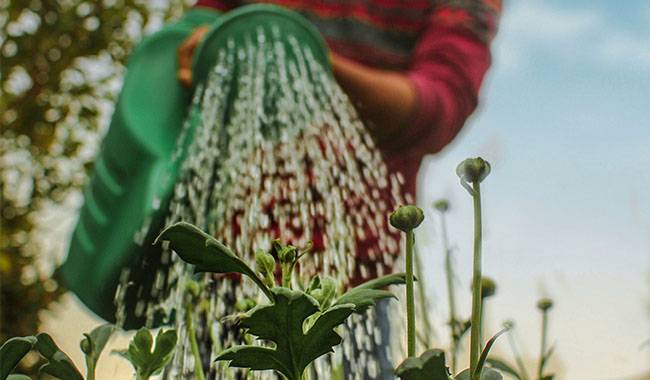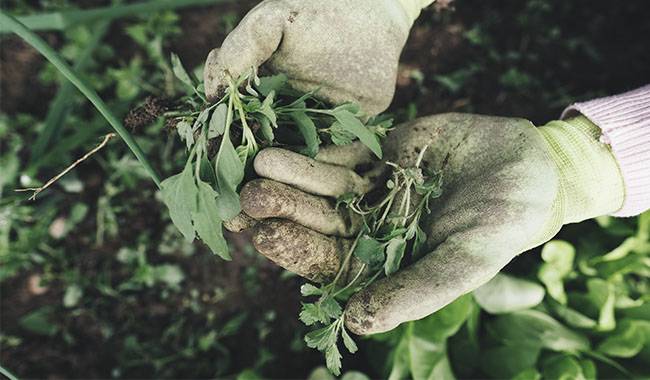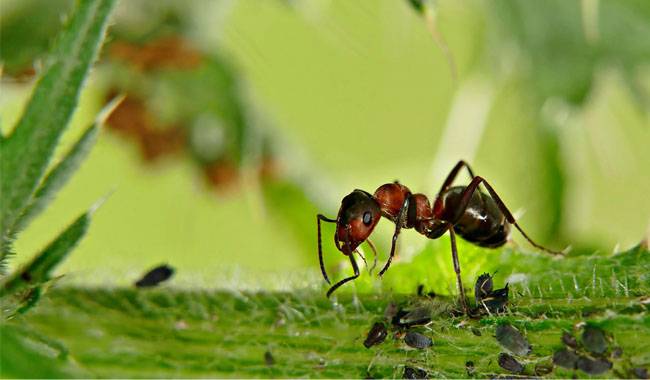
What is it aphids and ants? Is this an amazing natural symbiosis where the ants tame the “moths” they care for or are they the true predators, simply taking almost everything the aphids “eat” from the plant?
Is it the ants or the aphids that are primary in this interaction? It is important to understand this question if only to understand how to deal with these pests in our gardens.
In this article, we will talking about the nature of the interaction between aphids and ants, also the ways to combat them.
PECULIARITIES OF THE DEVELOPMENT OF APHID POPULATIONS
First of all, aphids are at the bottom of the food chain and they have many enemies to devour them. With this in mind, the only saving grace for aphids is to reproduce at lightning speed (there is no other way) to prevent the entire population from being destroyed as a result. So aphids are afraid and reproduce rapidly out of fear.
By reproducing, the aphid simply lays eggs, and in relatively large numbers compared to its body size – up to one hundred and fifty eggs per clutch. Amazingly, only one female, this tiny creature, can make (think of it) as many as two dozen such clutches in the two months of her short existence.
Can you imagine the sheer volume of offspring she could produce? The aphids stick their eggs to the leaves rather reliably with the help of a unique, aphid-only substance.
Interestingly, each ovipositor actively develops wingless and winged female dispersers, which lay their eggs on new plants. The higher the risk of population extinction, the more female propagules are born.
It has been noted that if many pests hatch from eggs, but they become malnourished, the female propagules simply fly away in search of a better place, flying over considerable distances of up to several hundred meters by the insect’s rudimentary standards.
Towards autumn, the weather becomes colder and the female insectivores begin to lay their eggs for the overwinter. They hide them in the most secluded parts of the garden plot, hoping that they will withstand the frost.
It has been noted that 7-8 days is sufficient for the larvae to hatch from the eggs laid by the female dispersers, and most interestingly, they are already capable of reproduction, often without fertilization. The females rush into battle, laying up to three generations of insects in three months. It is an entire army of hundreds of thousands of such brave individuals.
Aphids are completely undemanding: they need temperatures of 75-84°F (24°-29°С) to develop fully, but if the temperature is lower, below 68°F (20°С), aphid growth and development may slow down, sometimes so much that gardeners rub their hands together in cold years, thinking that they have defeated the aphids. If the temperature drops to 68 °F (20 °С) or lower, the delay in aphid development can last up to two weeks.
ABOUT THE SYMBIOSIS OF APHIDS AND ANTS
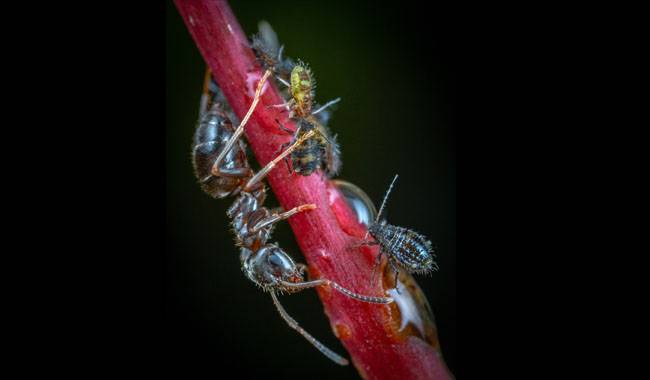
Let’s continue our discussion about ants. We will not describe their biology, but we can refute the myth that aphids are a kind of “little cows” that graze peacefully near anthills. When ants are hungry, they drag them to the trees, feed them and milk them, feeding on the sap that the ants drink from the plants. This is not entirely true.
In fact, the main aphids are female dispersers that choose the right conditions to lay their eggs, i.e., plants with fine crowns that do not lignify for a long time. For example, the young branches of wigwams, apple trees, and currants do not lignify for half the summer (where the aphids might only live if not for insecticides) and lay their eggs after selecting suitable bushes.
Ants cannot be called passive participants either; they try to establish anthills near cultivated plants, probably in the expectation that sooner or later the sweet sap extracted from the plant by the aphids will appear there.
Thus, we must recognize the symbiotic relationship between ants and aphids. Ants once inexplicably learned that if they stimulate aphids with their tendrils, they begin to secrete a very pleasant sweetness which, as a derivative of plant sap, is a most pleasant food for ants. Therefore, they must take care of the aphids to some extent: if they run out of aphid food, they grab them with their claws and take them to a new place.
The ladybug (biologists assure you that it can eat up to 100 of these insects in its lifetime) will come and the ants drive it away, while mealybugs, whiteflies, and other pests, which do not like aphids, will harm the garden and the ladybug will eat them.
The most interesting thing is that when the food for aphids becomes scarce, i.e. the plant growth becomes rough or they run out of leaf food, the aphids become useless to them and they either eat them all or regulate their number considerably and eat only some of them. If any of the “Botanical Garden” readers know something about protecting eggs from aphids, please write about it in the comments.
Some sources say that ants bring ants to their anthills in the fall, and they spread these ants on the roots of plants. I don’t know about this, but I do know that the aphid’s trunk is so thin and fragile that it can’t even pierce every leaf, like a hawthorn, so how can it survive on very hard roots?
WHICH PLANTS ARE DAMAGED BY APHIDS?
Apples, cherries, plums, black and red currants, young leaves and shoots of currants (although there are few aphids there, probably because currants, more attractive, are always around), on cranberries (but for some reason, not every year), grapes, climbing roses, okra, peppers, cucumbers, etc. – all these crops are damaged by aphids, although to different degrees.
For example, aphids on yarrow, whose shoots become woody in early June, are not afraid of them at all, but if you don’t treat currants, the picture from an aphid infestation can be quite frustrating.
SIGNS OF APHIDS ON PLANTS
So, the fear that aphids will soon declare war on you starts with the appearance of a large anthill on your plot. Suddenly it starts to stir in some way and ants are running up and down the trunk of the plant: the ants are drooling knowing that aphids have emerged.
Then check the tops of all the young shoots, starting with the blackcurrant, which is like an indicator: if it has curled up, the aphids are definitely there and probably everywhere.
In addition, atypical, lighter colors can be seen on the leaves of various plants, wilted or deformed young shoots, buds falling off (they lack nutrients), unevenly shaped flowers, leaves with a sticky coating (the ants haven’t finished eating them), and the bodies of dead aphids.
If aphids attack currants (which is usually the starting point), don’t panic. Do not spray chemicals in the vegetable garden; simply cut off the tips of branches with aphids and burn them at the back of the vegetable patch.
If aphids are attacking many plants and ants are spreading around the plot, more drastic measures are needed because not only do aphids directly harm plants, weakening their immunity and distorting their growth, but they can also spread viral diseases, including reductive aphids and sooty fungi, turning plants into something terrible.
APHID CONTROL METHODS
Aphids are far from a new pest, so there are more than enough means to deal with them. For example, if aphids are rare, then wear regular garden rubber gloves, the thinner kind, so as not to harm young shoots, and collect them by hand.
If you have water on your plot, you can use a high-pressure sprayer and try not to overdo it or break the shoots. We simply wash the aphids to the ground before they start climbing on the plants again, by which time the leaves and shoots have hardened and become “ungraspable” to the aphids.
Weed control in and around the plot is a must because, in addition to aphids, you may find other pests and diseases in the weeds. If you are having a hard time weeding, then use herbicides.
The so-called natural methods are quite interesting. All you need to do is create the most uncomfortable living conditions for aphids by using nature itself. Plant scented aphid repellent plants like garlic and onions next to annual aphid attackers like currants.
Planted on the periphery of the plot are crops that, on the contrary, attract insects – such as ladybugs, toad flies, and lacewings – all of which like to eat aphids. In fact, there are many such plants, such as the well-known nettle, and any pungent herb that gives off a healing aroma to us, and beneficial insects.
Birds may also be attracted to them, but beware: they will feed on your harvested cherries and cherry trees, buckthorn and blueberries, as well as on iris flowers.
Dried and raw seeds in the tray, raw fat on the string – sparrows, tits, and roseate spoonbills come out quickly, and when feeding time is over, they will also eat aphids.
Don’t run the site: In addition to removing weeds, as we have already mentioned, make sure there are no aphid species near cultivated plants, such as linden, wild chrysanthemum, goldenseal, cosmos, and Geldard rose.
CHEMICALS TO KILL APHIDS
As you know, chemistry is a harmful thing and it should be applied when there is no other way out. However, by the way, it can be argued that chemistry is the most effective way: it kills insects and is so effective that they won’t appear on your property again until the end of summer. But you shouldn’t forget that insecticides, which is the name of the pest control product, can also be dangerous to beneficial insects.
To get some idea of how harmful pesticides can be, let’s talk briefly about their hazard rating since there is often nothing other than this number indicated on the package. All insecticides are divided into contact insecticides, which begin to work only when they come into direct contact with the victim; enteric insecticides – when the victim swallows poisoned juice or food; and systemic insecticides, which are compound insecticides.
Systemic insecticides are the most effective: they kill insects and remain on the plant for up to four weeks, which, by the way, must be taken into account at harvest time. The negative side of this systemic insecticide is that it can poison people, the water in the pond, and useful insects, such as bees, as well as pests.
To avoid this, we recommend the use of biological agents. They are less effective, but as safe as possible because they come from plant components that have an inhibitory or exterminating effect on pests.
The disadvantage of any biological agent is that it is easily washed away by rain or watering, and the insects affected by it do not die immediately; they can continue to eat the plant, causing the same damage as before. In terms of food, vegetables, fruits and other edible parts of plants can be safely consumed after a few days of treatment with these drugs, but it is best to wash fruits and vegetables in warm water before giving them to children.
FOLK REMEDIES FOR APHID CONTROL
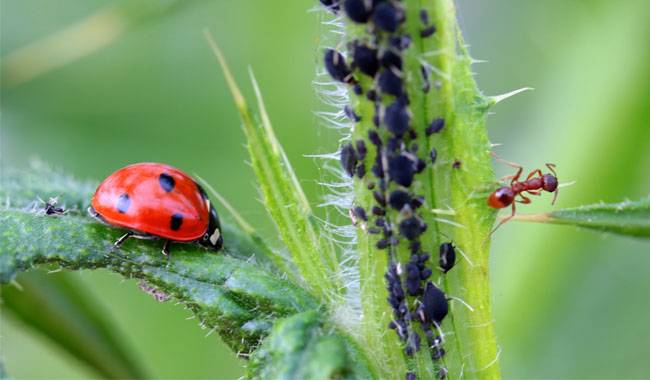
Everyone probably remembers a bucket of kerosene and a broom with which we shook the pests into the bucket to their certain death. And now, skilled gardeners have developed their folk remedies, which we can say are no less effective than harmful chemicals, although perhaps they are still not so active.
For years, soap solutions have taken top billing, but now it is likely that new-fangled antibacterial agents will be used in addition to the pests that are sick of all the simple laundry soaps. All you need to do is take two cups of water and a few teaspoons of antibacterial liquid soap and add vegetable oil to this mixture. The composition should be poured into five liters of water and leave it as thoroughly as possible. Next – refill the sprayer and arrange a large shower of unwanted aphids. Usually, two treatments are enough to make them disappear.
Kerosene solution is also very effective on large summer plots. All you need is one liter of room temperature water, 70 grams of kerosene, 30 grams of laundry soap, and a bucket of cold water. First, you need to dissolve the kerosene and soap in water at room temperature until a homogeneous composition is formed. Then pour the mixture into a bucket of water and stir well. Now you just need to add the solution to the sprayer to give the aphids a good long bath to discourage them from attacking the delicate leaves. You can keep this up to ten days until the aphids are eliminated.
Ash and their solution, in addition to protection – is also foliar feeding: because it contains up to 5% of potassium and some useful trace elements. To prepare the solution, take 350 grams of ash, 50 grams of laundry soap, and a bucket of water. The ash must be poured into water (preferably rainwater, that is soft) and stirred thoroughly, then put on low heat and cook for half an hour. All that remains is to add the laundry soap and let it all cool. Then, as usual, put it in a sprayer and get rid of the harmful aphids.
If you can pump out a few heads of onion and a liter of water, the onion infusion will produce a good compound to deal with aphids. You can add ten grams of laundry soap as an adhesion agent. All you need to do is cut up the heads of onions, pour in a liter of rainwater, and add 10-15 grams of laundry soap. This should all soak for about half a day, the mixture should be strained before use, add a liter of water if necessary, baste with a sprayer and you are ready to spray aphids.
Chamomile infusion – I can’t even believe that it helps too. To remove aphids with chamomile, you just need to take 150 grams of medicinal chamomile, pour it into a liter of soft water and add 10 grams of laundry soap. The solution should then be allowed to soak for a day and diluted three times before treatment, but of course, you can leave it undiluted.
Garlic infusion – This remedy will be more helpful. You must take a few heads of garlic and a liter of soft water. Before use, you should crush (crush) the garlic, pour it into the water at room temperature, leave it for a week and cover it tightly. Before use, the infusion should be diluted twice and this solution should be poured generously on the aphids and the operation should be repeated a day later.
Peppers are “heavy artillery”. For maximum effect, only the freshest pepper pods should be taken, and there should be a lot of them, about a kilo, as well as a bucket of rainwater at room temperature.
Pepper pods, pre-mashed through a meat grinder poured into a bucket of water, covered, and left in a dark place for a day. After this time, the resulting solution should be diluted 10 times with water, loaded into a sprayer, and treated with all the shrubs infested with aphids.
It so happens that there are a lot of tomatoes on the pass, more precisely, the decoction from it is also a good way to control aphids. In preparation, you need to pour six kilograms of tomato stems into the water of about 104 ° F (40 °C) and add 30 grams of laundry soap. Now all that remains is to boil the resulting solution for half an hour and dilute it with water in a ratio of one to three. Then – filter, fill the sprayer and treat for aphids.
Celery is a powerful enemy of everything, and our ancestors, skillfully wielding it, even the warts were removed, not to mention the aphids. To remove the aphids from the site, all you need is 500 grams of brandy and a liter of water. Cutting and fine-cutting in pre-gloved and goggled plants (both flowers and stems), it is necessary to pour a liter of water, so that it is left for a day to stick. After that, the prepared mixture should be poured into a bucket of water, cooked on low heat for a quarter of an hour, then cooled and diluted three times before spraying.
Everything in the box – including the potato mop. To prepare the infusion, you need a kilogram of potato tops and a bucket of water. You need to finely chop the potato pieces, pour them in a bucket of water, then let them soak for three hours and dilute them three times with water before treating the aphids.
But that’s not all. It turns out that the aphid is so afraid of smoke that it can trivially suffocate if you create smoke and fire on the periphery of the plot. Both twig smoke and tobacco smoke can be used for this purpose, as the latter can kill aphids fatally.
WAYS TO FIGHT ANTS
Starting with controlling aphids, let’s move to control ants as they protect them, drag them around and hide them. There are many ways to fight ants, from the banal dousing them with boiling water, horse urine, acid, and similar means. Some people use rakes or shovels to destroy the ants, but then the ants create them, and nature lovers can dig them up and remove the ants in large wooden barrels and place them on a piece of land.
Of course, there are many insecticides, traps, baits, and other chemicals, as well as trivial trap tapes to which ants will stick as soon as they start moving up and down the trunk in search of aphids.
Nevertheless, nothing is more effective than insecticides. The best-known preparations for removing ants from plots are based on the substance “Diazinon”, which affects the insects’ nervous system, causing them to become paralyzed and die.
CONTROL OF APHIDS
First of all, we create barriers on the plots, sowing onions, garlic, mint, and marigolds along the perimeter. We regularly fight against weeds, remove all peeling bark from trees, where aphids cannot lay eggs in winter, whitewash trees and shrubs with a lime solution (it is a good disinfectant), remove all root shoots, above which the leaves remain soft for longer and on which aphids are fed for longer.
We do preventive spraying, timely feeding and watering of plants, improving their immunity, attracting birds and useful insects to the area, including the use of a minimum amount of chemicals and, of course, and control.
Basically that’s all of it. If you have your own proven folk methods of aphid control, then write about them in the comments, we welcome any useful post.




